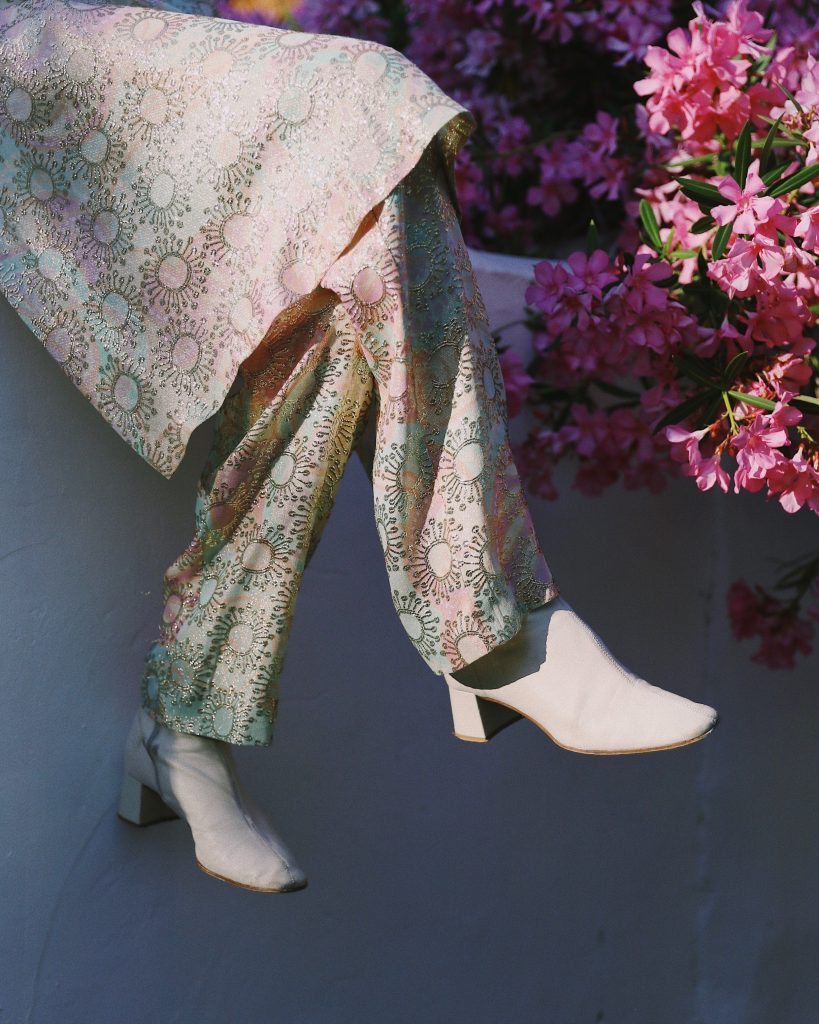By Munira Fidai
Circa 2022. The world thrives on fast fashion and the environment chokes on an estimated 92 million tonnes of textile waste created annually from the fashion industry. This statistic is, but the tip of the iceberg, as general wasteful behaviour causes about 2.01 billion tonnes of solid waste annually. As part of the relentless efforts to curb- or at least reduce- this senseless waste, environmentally conscious people have started to practise thrifting, a concept that has as many fans, as critics
Thrifting is the idea of buying and selling preloved clothing, furniture and other household items at a discounted price. Cynics may say that these efforts are too little, too late, to save the planet, but advocates of this notion see a wider range of benefits.
At the forefront of it all, is of course, the environment. Costs to the planet are evident at each stage of the production process. It takes roughly 1800 gallons of water to produce a single pair of jeans. Imagine wearing it once or twice and then dumping it in the trash. The mindless action not only chokes the earth, but wastes all that water, energy and carbon footprint that went into making that pair of jeans. A shocking statistic shows that due to the perennially impermanent nature of fashion, an equivalent of one truckful of clothing gets burned or buried in a landfill, globally, every second. By giving a second life to clothes, it is possible to stretch these costly efforts as much as possible so that lesser items end up in landfills and we leave a somewhat fainter carbon footprint on the environment.
“The whole thing of clothes is insane. You can spend a dollar on a jacket in a thrift store. And you can spend a thousand dollars on a jacket in a shop. And if you saw those two jackets walking down the street, you probably wouldn’t know which was which.”
Helen Mirren
While many look down upon thrifting because they see them as inferior or damaged goods, this notion is far from the truth. Preloved items found at thrift stores, garage sales and flea markets are only gently used, and usually in good shape, with enough life left in them for the next user, before being sold off or given away. Those who can afford it even give away branded items with the tags still on them! Owing to their preloved status, all this paraphernalia is priced much lower than its retail price so thrift shopping is usually a steal.

Thrifting is also convenient for the nitty gritty details that regular shopping does not give us. For instance, the clothes are already broken into. This means that one does not have to worry about them shrinking or bleeding. So, if a piece of clothing is a great fit at the store, chances are that the item will look just as good even after a wash at home. Thanks to the rewarding price ranges, thrift stores and flea markets are great places to get unique supplies for your DIY projects. From creating tank tops from t-shirts, to furnishing entire homes on a tight budget, thrift stores can be thanked for it all.
If one is looking for variety, thrifting helps them find it sustainably. A great benefit of this method of shopping is that one can invariably find rare items that are out of production or have not been available for a long time. This could include the cool clothing styles of the 90s, gramophones and cassette players of the olden times, out of print versions of books, board games that are no longer sold anywhere else, and even vintage products and collectibles. Considering that stores like these rely heavily on regular donations, one can get a break from the relatively similar styles at regular retail stores and find new variety here, each time they visit.
For those with eclectic tastes, there is nothing better than a trip to the thrift store. It is a playground of diverse assortments of clothing, where one can mix and match to create unique outfits for themselves. Not simply a one stop solution for your entire ensemble, buying from flea markets or garage sales also greatly reduces your chances of running into someone wearing the same clothes or carrying the same handbag- a guarantee that brands cannot give you.
If your love language is giving gifts, opting for thrifting can be truly rewarding. Because of the huge variety of fun knicks and knacks, home appliances, electronic goods, books, furniture, etc., not to mention the glaring possibility of finding rare antiques, and gift inspiration, thrift stores are failsafe locations that are bound to have something in them for everyone.

The overwhelming choices we are given has made our shopping habits myopic and rather thoughtless, and the mindless running after brands has also significantly hampered local businesses. By choosing to shop at a thrift store, you can not only make a difference to your surroundings by supporting a local business, but also often get a chance to give back to a charity, as most thrift establishments choose to donate their proceeds, rather than keep them.
A common observation, across all age groups is that past generations were better at maximising the usage of the things they bought and were several times less wasteful than their successors. The notion holds true to an extent and short-lived fads and cheaper prices have played their parts in catalysing this costly wave of selfish consumerism. However, the concept of thrifting is gaining traction in many parts of the world and after the west, the east is also opening up to the benefits of sustainable purchasing habits and looking to the idea of buying preloved goods as a way to make money, score great purchases and also give back to the environment. If anything, this fresh, new perspective can be heralded as an apology to the environment for all the damage the ever evolving nature of fashion has done to it.













